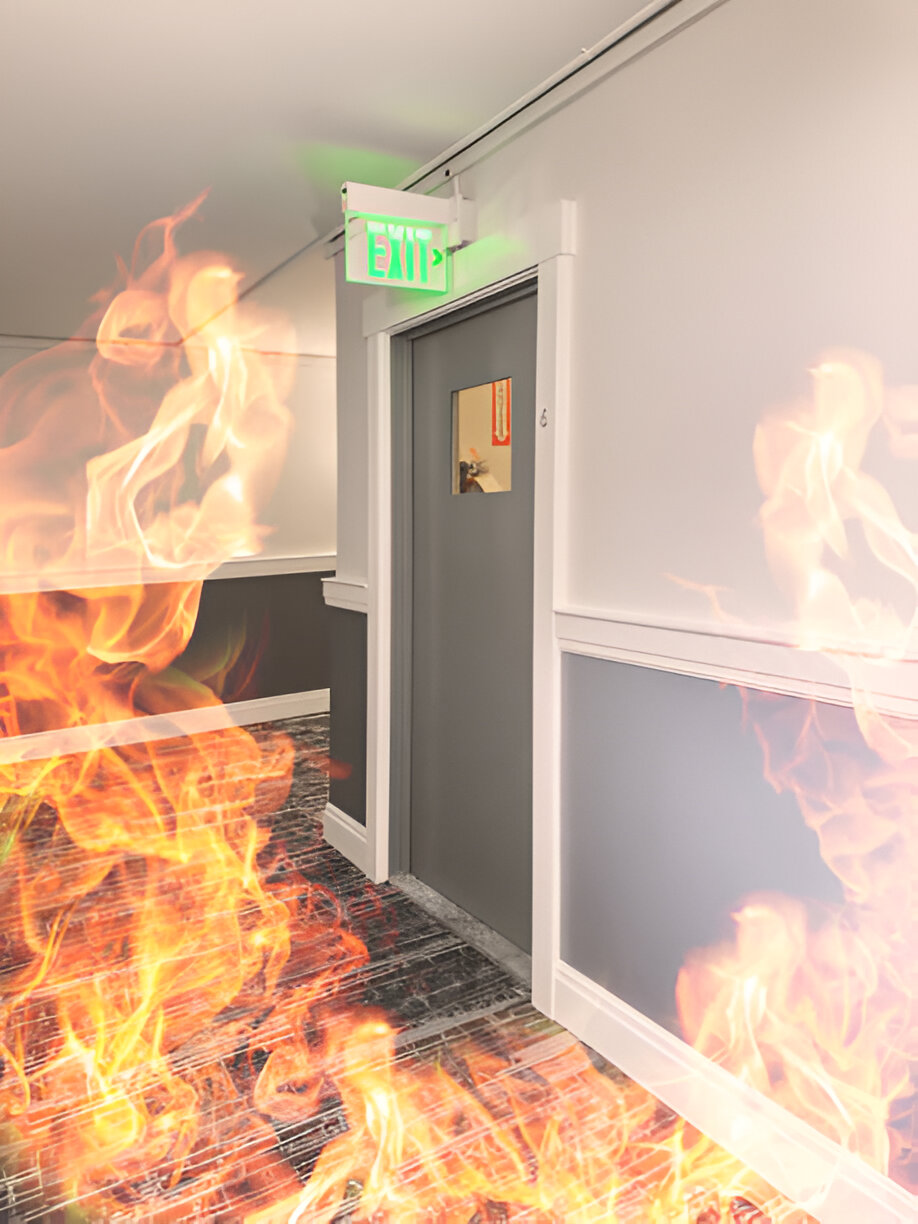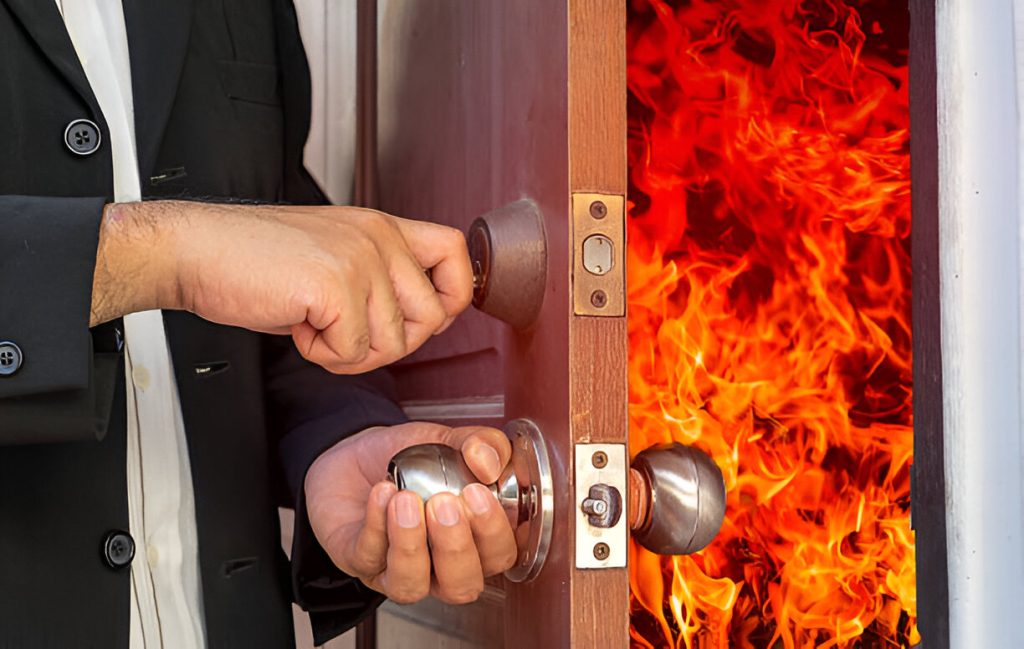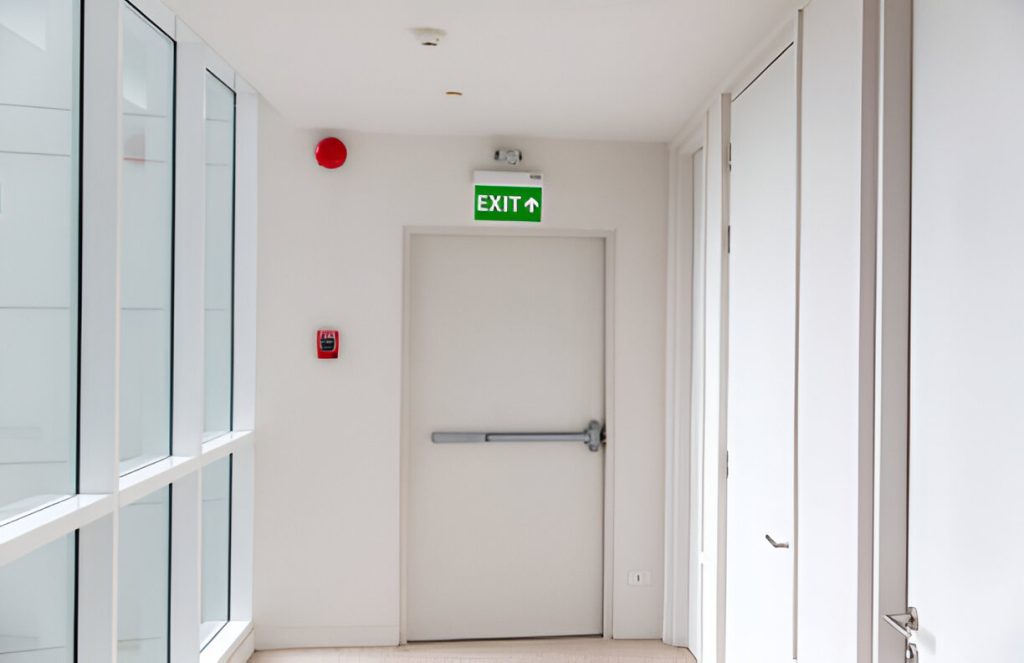Fire door certification is a critical aspect of building safety. It guarantees that fire doors meet stringent standards like BS 476-22 and BS EN 1634-1. This certification process includes performance testing and regular inspections to verify effectiveness against fire and smoke. Compliance with relevant regulations, such as the Regulatory Reform (Fire Safety) Order 2005, is essential. Understanding the nuances of fire door certification can reveal significant implications for safety management and liability in buildings.
Awarded by IFSM
Awarded 'IFSM Accredited Fire Safety Specialists', we have everything needed when it comes to ensuring your fire doors meet the highest safety standards.

Overview of Fire Door Certification
Although fire doors serve a critical role in enhancing building safety, their efficacy relies heavily on a robust certification process that verifies compliance with established fire safety standards. This certification guarantees that fire doors can effectively resist fire and smoke spread, involving rigorous performance testing in accordance with standards such as BS 476-22 and BS EN 1634-1. The certification process involves not only initial testing but also regular inspections to maintain operational integrity and safety features. Compliance with the Regulatory Reform (Fire Safety) Order 2005 mandates that fire doors meet stringent performance criteria, thereby providing essential assurance of their reliability during emergencies. Consequently, certification is crucial for safety audits and insurance assessments, reinforcing the importance of maintaining fire safety protocols in building management.
Legal Requirements for Fire Doors in London
In London, the legal requirements for fire doors are governed by a combination of national regulations and local building codes, ensuring that these vital safety features effectively mitigate fire risks. Fire doors must meet specific performance standards, including integrity and insulation properties, as outlined in the Building Regulations 2010 and the Regulatory Reform (Fire Safety) Order 2005. Compliance with British Standards, particularly BS 476 and BS EN 1634, is essential for certification. The installation of fire doors must facilitate proper sealing and maintenance of compartmentation to prevent smoke and heat transfer. Additionally, signage indicating the fire door’s purpose is mandated. Regular inspections and maintenance are important for ensuring continued compliance and operational effectiveness, safeguarding occupants and property against fire hazards.
Fire Door Regulations
Fire door regulations establish the framework for guaranteeing the effectiveness and reliability of these critical safety installations. These regulations mandate specific design, construction, and performance criteria to enhance fire resistance and limit the spread of smoke and flames. Compliance requires that fire doors possess appropriate fire-resistance ratings, which must be verified through standardized testing.
Building Code Compliance
Compliance with building codes is essential for guaranteeing the safety and functionality of structures, as these codes set forth minimum standards for design, construction, and occupancy. Adherence to these regulations mitigates risks associated with structural failure, fire hazards, and environmental impact. Building codes encompass various aspects, including structural integrity, electrical systems, plumbing, and accessibility provisions.
Fire Risk Assessments
Although often overlooked, fire risk assessments play a critical role in identifying potential hazards and vulnerabilities within a building. These assessments evaluate various elements, including the layout, materials, and occupancy, to determine the likelihood and impact of fire incidents. By systematically identifying risks, organizations can implement effective mitigation strategies, enhancing overall fire safety.
Inspection Frequency
Regular inspections are essential for maintaining fire safety standards within any facility, as they help identify potential issues before they escalate into serious hazards. The frequency of these inspections should be determined by various factors, including the type of occupancy and usage of the facility. A systematic approach guarantees compliance with regulatory requirements and promotes a culture of safety.
Importance and Benefits of Fire Door Certification
Fire door certification plays an essential role in enhancing building safety by ensuring that fire doors meet established safety standards. This certification process validates that fire doors possess the necessary resistance to fire and smoke, thereby confirming their efficacy in compartmentalizing fires during emergencies. The benefits of certification extend to compliance with regulatory frameworks, which can facilitate smoother safety audits and insurance assessments. Certified fire doors often lead to reduced insurance premiums, as they signify a commitment to safety. Additionally, regular inspections mandated by certification promote ongoing functionality, ensuring that door components, such as seals and closing mechanisms, remain effective. Consequently, fire door certification not only safeguards lives but also preserves property and enhances overall emergency preparedness in buildings.

Common Issues and Maintenance of Fire Doors
Guaranteeing the proper functionality of fire doors requires vigilance in identifying common issues that may arise throughout their lifespan. Frequent defects include misaligned or damaged seals, which impair smoke and fire resistance, necessitating immediate inspection and replacement. Additionally, faulty door closers can prevent complete closure, requiring recalibration or replacement to guarantee compliance with safety standards.
Regular assessments of door integrity are vital; compromised doors may need evaluation for potential replacement. Neglected maintenance can lead to severe consequences during emergencies, emphasizing the importance of systematic inspections. Documenting maintenance activities and findings is essential for compliance verification and effective risk management, guaranteeing fire doors remain operational and effective in their significant role within fire safety protocols.
Installation, Maintenance, and Recertification
Effective installation, maintenance, and recertification of fire doors are critical components in maintaining safety standards within a building. Proper installation requires adherence to manufacturer specifications and local regulations, ensuring that fire doors fit correctly and function effectively within the fire protection system.
Regular maintenance involves systematic inspections to verify the integrity of seals, hinges, and closure mechanisms, addressing any deficiencies promptly to maintain functionality.
Recertification, typically conducted annually, evaluates ongoing compliance with applicable standards, confirming that fire doors continue to meet performance criteria.
Detailed documentation of installation, maintenance, and recertification activities is essential for compliance audits and inspections, safeguarding the building’s fire safety measures and ensuring readiness in emergency situations.


Common Defects and Inspection Protocols
Identifying common defects in fire doors is essential for maintaining their integrity and functionality. Frequent issues include misalignment of door seals, which can compromise smoke containment, and malfunctioning door closers that fail to guarantee full closure.
Additionally, physical damage to the door structure, such as dents or punctures, necessitates immediate evaluation and potential replacement.
Inspection protocols should involve a thorough assessment of seals, hinges, and closing mechanisms, guaranteeing compliance with regulatory standards. Certified inspectors, possessing relevant qualifications and extensive experience, should conduct these evaluations.
Regular inspections are critical to preemptively address deficiencies, thereby ensuring that fire doors function effectively in emergencies, thereby enhancing overall fire safety within a facility.
Qualified Engineers
Our engineers have 10 years of experience
Low Price Promise
We won't be beaten on price as compared to market
Fast Response
Arrange an appointment, as early as tomorrow
Book Anytime
Book at a time that works best for you
